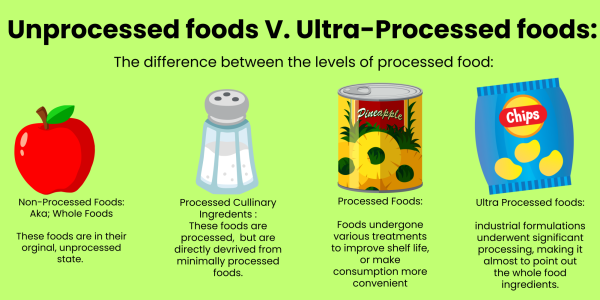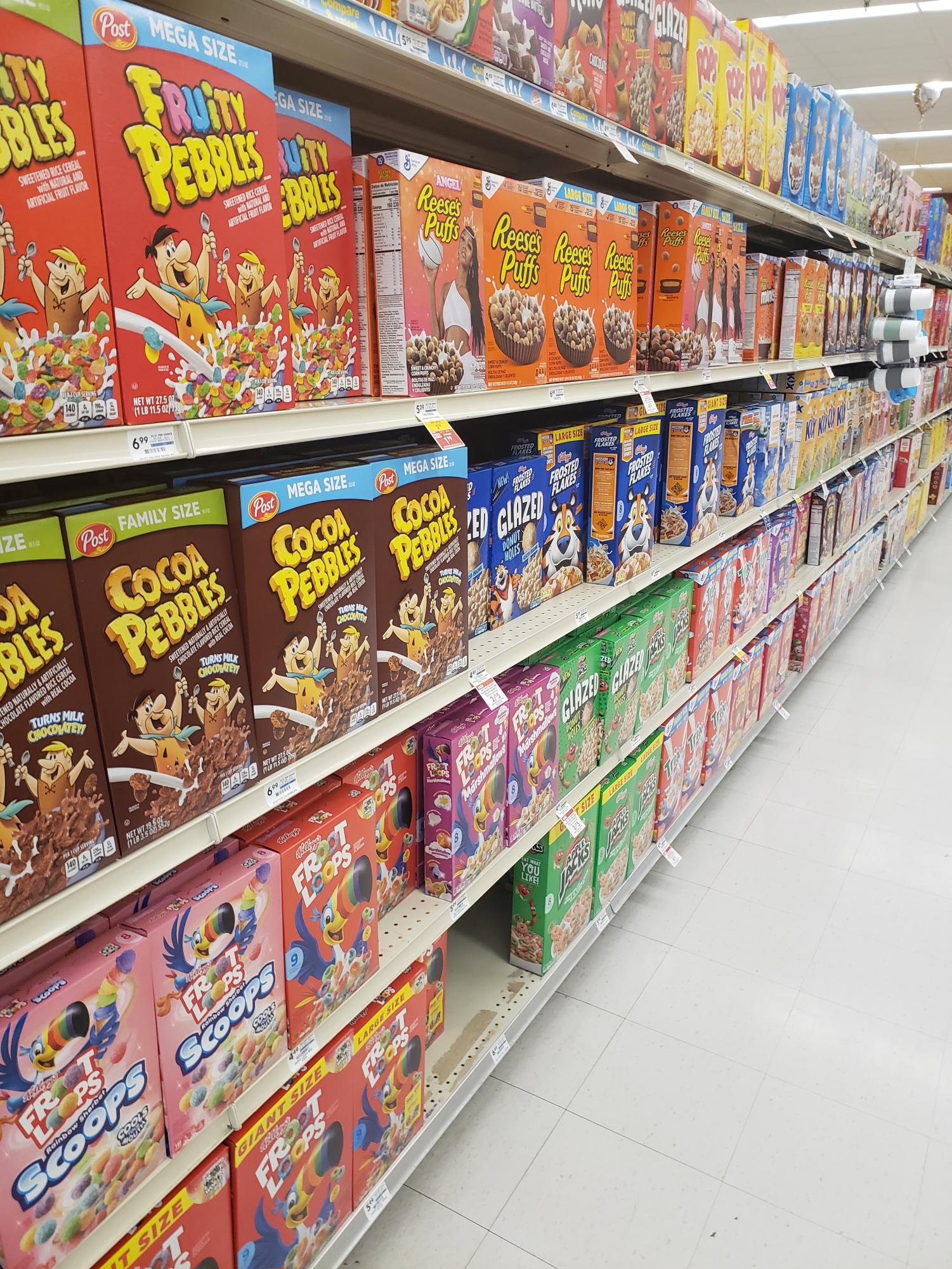Take a stroll through the cereal aisle at your local grocery store.
Take a good, long look at the boxes. How many of them have mascots that appeal to children? How many are telling them to scan a code and enter a prize? How many depict popular children’s Tv show and video game characters? Even the cereals that market themselves as healthy, are still targeting kids.
This is child marketing—and the colorful—seemingly innocent packaging hides a sinister reality.
Child marketing is when companies develop their product to directly appeal to kids, which is one of the largest consumer markets out there. It starts when they aren’t even born yet, with hundreds of companies striving to market to expectant parents. From diapers with popular cartoon characters on their packaging, to companies fear mongering about toxins found in other plastic toys compared to theirs, to baby food companies claiming about how clean their products are, child marketing starts with the parent. Once that child is older, and they turn on Nickelodeon or Cartoon Network, they are bombarded by ads. Children under the age of 12 in the United States see roughly 20,000 to 40,000 commercials per year, with around 45% of the overall commercials being food related, 84% of commercials they see being about food high in sugar, salt, and filled with unnecessary ingredients and preservatives. Crazy enough, McDonald’s, the biggest fast food chain, is the world’s largest toy distributor.
Take for example, Lunchables, the ads involving this product in the 90’s and 00’s showed children sadden over having a sandwich and apple for lunch, meanwhile, when the parent gives them Lunchables for lunch, they are depicted as happy, and cool. The ad almost guilt trips parents, almost whispering in their ear, ‘buy this, and you’ll be the cool mom’. It plays on the fears of parents about their children someday resenting them, and that if they buy their child this product, they will love them.
Sugar is an addiction.
Imagine giving your kids crack cocaine. If you know anything at all about parenting, you probably find the concept appalling. However, what you might not know is that feeding your kids sugary foods isn’t all that different. Some may believe that this is an exaggeration, that there is no way that processed foods anywhere on supermarket shelves can compare to literal drugs. But science shows that sugar does, in fact, hijack your brain, and kids are especially vulnerable.
According to The National Institutes Of Health, rats given both cocaine and sugar preferred and sought out the sugar, in some cases ignoring the cocaine entirely, and this is due to the way human, and animal brains, are hardwired. In fact, sugar and cocaine both activate the same part of the brain, releasing endorphins and activating the reward system. Both cause the same cellular changes in the brain, attaching to receptors and activating synapses. Children’s prefrontal cortices’ aren’t fully developed until they are in their early to mid 20’s, and this part of the brain controls decision making and impulse control. As a result, children are much more easily influenced by the advertising of marketing, especially ads that contain bright colors, or children their age.
We are biologically hardwired to seek out sugar. The human brain needs glucose to function, so humans evolved to actively search for sugar. Back before we could reach into our cupboards to get our sugar fix, we needed to find it in naturally occurring sources. Eventually, this led to crop cultivation. But this progress had unforeseen consequences. Nowadays humans have too much access to sugar, and are no longer running for miles a day. This creates an imbalance. Our bodies haven’t caught up with the lack of scarcity, and as a result, we struggle to limit ourselves.
Imagine being a smoker, or someone who is addicted to alcohol, and every channel, every aisle, and every billboard you see is advertising cigarettes and alcohol. It’s like this with food and sugar addiction, arguably one of hardest addictions to break, since food is everywhere. You just can’t stop eating for long periods of time like you might to quit drinking or smoking. You can’t simply avoid situations that might tempt you again, because places to eat are ingrained in many aspects of life, like snacks and drinks at a theatre, cafes in grocery stores, or the smell of a restaurant nearby. And thanks to the fact that eating is a social event, you may find yourself in difficult situations, not only reading a menu full of descriptions of unhealthy foods, but also being surrounded by people eating those foods. When you get addicted to food, you are constantly exposed to a barrage of temptations telling you to keep coming back for more, over and over again.

The ingredients problem:
Our difficulties with self control are exacerbated by the prominence of Ultra-processed foods. Ultra-processed foods are foods that have been severely altered from their original form. These foods barely contain any resemblance to the original products. For example, processed potato chips look nothing like potatoes. If you pick up a can of Pringles, you may see that the ingredients include dried potatoes (which are potatoes that are mashed, then dried in a factory) vegetable oil, degerminated yellow corn flour(where the germ of the corn is taken out, which contains the plants fibers, then ground up into flour), cornstarch, rice flower, maltodextrin, mono- and diglycerides, salts, and wheat starch. All of these ingredients are mixed together into a slurry, and poured into Pringle shaped molds, which are then cooked. Food like this is designed to make and keep you hungry. In the average grocery store in America, 73% of all items are considered ultra-processed.
An over consumption of processed foods can lead to obesity, cardiovascular disease, type 2 diabetes, some cancers, and can even cause premature death. The Standard American Diet, or SAD, is one of high intake of processed foods, where on average, 70% of the diet is made up of ultra processed foods. This diet is also known for its low intake of lean proteins, whole grains, fruits and vegetables, and a high intake of sugar, fat, and processed meat. an over-consumption of glucose over a long time can lead to diabetes. However, constant, short-duration spikes can still lead to other consequences, such as nerve damage, vision problems, kidney damage, heart disease, and even organ failure. Processed meat, a known human carcinogen, can lead to a high chance of developing cancers, such as breast and colon cancer.
“Is it the ads we should be concerned about or the legalities and regulations that surround what we allow in our food?” Mr. Johnson, a history teacher at BHS, who is also a parent, said. “We teach our children about healthy eating and the fact that the package does not indicate the quality.
“I have seen commercials targeting kids and food items that have imagery of cartoon characters. Most of these advertisement techniques target Pandora stations, movies and the ads that are shown if you simply use the free version etc. “
“Yes, they see end caps, at their level cereal (always the most sugar). They love Lunchables but give them the ham without the pretty box and it’s less appealing. So occasionally there are positive consequences.”
“Food industries can target children through their advertisements of their products. For example, certain cereals target children through using colorful and animated commercials to make young people want to eat their product.” Mr. Baker, a PE teacher at our school, said. ” An example of that would be Trix cereal. They have a slogan “Trix are for kids.”
So, how does this relate to child marketing?
Child marketing helps companies that produce ultra-processed foods make a much higher profit than they normally would, and then use the increased gains to get the next generation hooked on their over-sugared, ultra-processed, addicting foods. This can lead to an eating disorder. However, the media tends to focus on anorexia, bulimia, or ARFID while overlooking emotional eating and binge eating. The public perception can make it hard to remember that binge eating, just like anorexia or a drug addiction, is a complex condition that can be influenced by life experiences, self image, and the people around them.
Stopping the cycle of overeating ultra-processed foods at childhood is necessary for the long term health of America, not just for the parents, but the future of the children as well, even if that means turning off the TV.




Mrs. Kowalski • Apr 9, 2025 at 12:10 pm
It is a huge challenge to find cereals that have less than 16 grams of sugar.